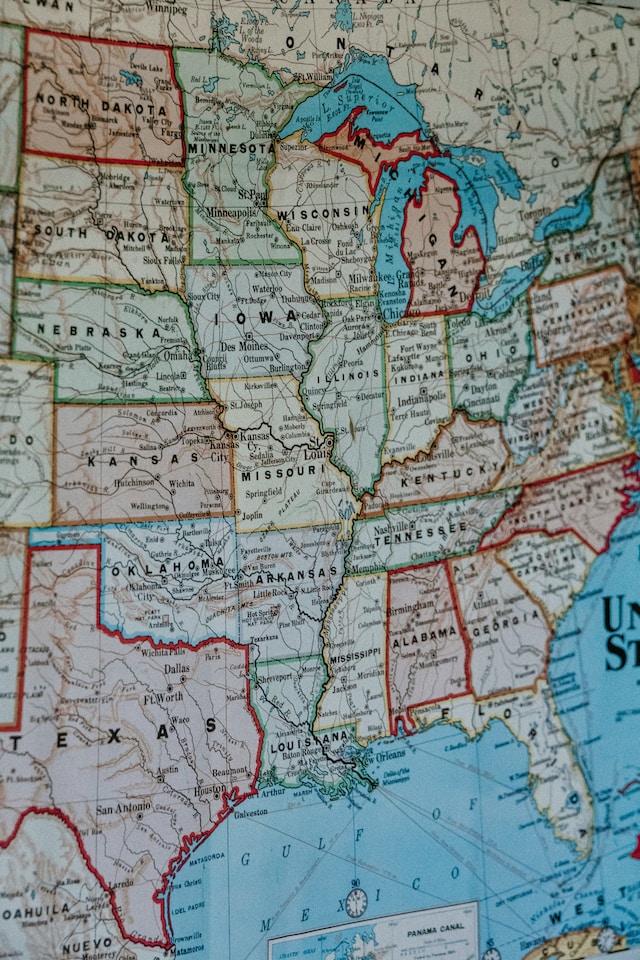
The benefits of paid leave are clear. Research shows that offering paid leave increases participation in the workforce, improves financial security, supports child development and improves maternal health, and can increase employee productivity and retention.
Despite this, the US is one of only six countries in the world that doesn’t guarantee any type of paid leave to full-time workers. Without access to paid leave, employees who face a serious medical condition or who need to care for a family member or child can experience financial insecurity and may drop out of the workforce entirely.
In the absence of federal legislation, 13 US jurisdictions have passed paid family and medical leave laws as of May 1, 2023, and eight more have proposals under consideration.
What does the term “paid family and medical leave” encompass?
Paid family and medical leave (PFML) or paid family leave (PFL) refers to a collection of state laws that provide paid time away from work for employees in certain situations. Different states use different terms for these programs and the specifics of the programs vary by state.
States with paid family leave laws require employers, employees, or both to pay a percentage of eligible employees’ wages into either a state-run paid leave fund or a private insurance fund. If an employee takes covered leave, the fund will reimburse employees for a percentage of lost wages for a predetermined period.
Although coverage specifics vary by state, paid family and medical leave programs can cover the following situations:
- Medical leave. Medical leave can cover time away from work for an employee dealing with a serious health condition, such as an injury or an illness. Paid medical leave coverage can also be known as temporary disability insurance.
- Parental leave. Parental leave can cover time away from work to care for and bond with a new child—either after a birth or an adoption. Parental leave can also be referred to as maternity leave, paternity leave, or bonding leave.
- Caregiving leave. Caregiving leave can cover time away from work needed to care for a family member or loved one dealing with a serious health condition. Caregiving leave coverage can also be known as temporary caregiver insurance.
- Deployment-related leave. Deployment leave can cover time away from work for an employee whose family member is currently or will be deployed in active-duty service to the military. Deployment-related leave can cover making arrangements for deployment, attending military events, or spending time with a family member or loved one who is home on short-term leave during deployment.
- Safe leave. Safe leave can provide coverage for employees who need to take time away from work because they, a family member, or a loved one has been the victim of a domestic or sexual assault. Covered activities include seeking a restraining order and relocating.
In some cases, paid family and medical leave laws also expand on federal job protection provisions, guaranteeing a certain amount of job-protected leave not otherwise granted under federal law.
What laws require employers to provide paid family and medical leave?
Paid family and medical leave is not currently required under federal law. Instead, paid family and medical leave requirements are determined at the state level, and programs are administered by the states.
As of May 1 2023, the following 12 states and the District of Columbia have passed laws requiring private employers to provide some form of paid family medical leave:
- California
- Colorado
- Connecticut
- Delaware
- Illinois
- Massachusetts
- Maryland
- New Jersey
- New York
- Oregon
- Rhode Island
- Washington
- DC
Eight states (Arizona, Iowa, Oklahoma, Minnesota, North Carolina, Tennessee, Pennsylvania, and West Virginia) also have proposed paid family leave laws in various stages of the legislative process (as of May 1, 2023).
Additionally, New Hampshire and Vermont provide guaranteed coverage to state employees and allow private employers or employees to opt in to state plans.

What does paid family leave typically provide for?
Every state has different provisions around paid family and medical leave. Although all states with paid family leave provide paid parental leave, family caregiving, and personal medical leave, additional leave types, lengths, reimbursement rates, and employer participation requirements vary by state.
Here’s an overview of key variables:
- Leave types offered. As of 2023, only New Jersey, Connecticut, Oregon, and Colorado provide paid safe leave coverage, and only California, Colorado, New York, Washington, Connecticut, Maryland, Massachusetts, and Delaware provide paid deployment-related leave.
- Specific covered situations. States define covered situations differently. Colorado’s program, as an example, grants paid leave to care for “any individual with whom the employee has a significant personal bond that is like a family relationship,” while California only grants leave to care for a child, spouse, parent, grandparent, sibling, or registered domestic partner.
- Amounts of paid leave available. Each state determines the maximum number of weeks available for each type of leave as well as the total maximum paid leave amount per year. As of 2023, Rhode Island offers the highest maximum at 30 weeks of paid leave per year.
- Job protection provisions. The federal Family and Medical Leave Act (FMLA) requires covered employers to provide up to 12 weeks of unpaid job-protected leave to qualified employees. Some state programs also include job protection provisions, which can provide additional protections and cover employees whose employers aren’t subject to FMLA requirements.
- Premium amount and responsibility. Although all states calculate premiums as a percentage of employee wages, both premium amounts and payment responsibilities vary by state. As of 2023, every jurisdiction except for DC requires employees to contribute some portion of premiums.
- Wage replacement rate. All states calculate wage replacement rates as a percentage of the employee’s average weekly wages. Rates vary from 50% to 100%, and many states establish a scale that provides higher replacement rates for lower-paid workers. All states also set a maximum weekly reimbursement rate.
- Businesses required to participate. Some states exempt certain businesses from program participation requirements or waive the employer portion of premium contributions. In some cases, individual employers and employees can opt in if not otherwise required to participate.
- Employee eligibility. State law determines which employees are eligible for PFML. Most states determine employee eligibility based on the amount of time worked or wages earned from a covered employer.
Here’s an overview of employer contributions and participation requirements by state:
| State | Date effective | Max. weeks paid leave per year | Parental family caregiving, and personal medical leave offered | Safe leave offered | Deployment-related leave offered | Employer contribution to premiums (as percentage of employee wages) | Applies to |
|---|---|---|---|---|---|---|---|
| California | 2004 | 8 weeks | Yes | No | Yes | 0.45% | All employers |
| Colorado | 2023 | 12 weeks | Yes | Yes | Yes | 0.45% | All employers |
| Connecticut | 2021 | 12 weeks | Yes | Yes | Yes | None | All employers |
| District of Columbia | 2020 | 12 weeks | Yes | No | No | 0.26% | Private employers |
| Delaware | 2025 | 12 weeks | Yes | No | Yes | 0.4% | - Parental leave: employers with 10 or more employees. - Family caregiving and medical leave: employers with 25 or more employees (excluding the federal government) |
| Illinois | 2024 | 1 week | Yes | No | No | None | All employers |
| Maryland | 2023 | 12-24 weeks | Yes | No | Yes | 0.6% | Employers with 15 or more employees |
| Massachusetts | 2019 | 26 weeks | Yes | No | Yes | 0.68% | Emoloyers with 25 or more employees* |
| New Jersey | 2009 | 12 weeks | Yes | Yes | No | None | All employers |
| New York | 2018 | 12 weeks | Yes | No | Yes | None | All employers |
| Oregon | 2023 | 12 weeks | Yes | Yes | No | 0.6% | Employers with 25 or more employees* |
| Rhode Island | 2014 | 30 weeks | Yes | No | No | None | All employers |
| Washington | 2019 | 16 weeks | Yes | No | Yes | 0.439% | Employers with 50 or more employees* |
*Oregon, Massachusetts, and Washington businesses that meet the small business exemption are not required to make employer contributions but must withhold and remit the employee-funded portions of premiums to the state.
PFML vs. unpaid family medical leave (FMLA)
The federal Family and Medical Leave Act (FMLA) is a federal law requiring employers with 50 or more employees to provide a certain amount of unpaid leave to workers in covered situations. Businesses must guarantee that a worker can return to a job with comparable pay and benefits after taking leave and provide continued healthcare coverage for the employee during the leave.
FMLA provides 12 weeks of unpaid leave during a 12-month period in the following situations:
- Medical leave. An employee has a serious health condition that makes it impossible to perform the functions of their job.
- Parental leave. An employee requires time off to care for a child within one year of birth, adoption, or placement in foster care.
- Caregiving leave. An employee requires time off to care for a family member (spouse, child, or parent) with a serious health condition.
- Deployment-related leave. The employee’s spouse, child, or parent is a covered active-duty military member and the employee requires time away from work to deal with issues related to the deployment.
FMLA also provides 26 weeks of leave in a 12-month period for employees whose spouses, parents, children, or next of kin are injured or ill military service members.
PFML vs. sick leave
PFML is distinct from sick leave. PFML provides coverage for serious medical conditions, which are defined under federal law as an illness, injury, or medical condition that requires either inpatient care or continuing treatment by a health care provider. Sick leave covers minor and short-term medical conditions, such as a cold or the flu.
Although federal law doesn’t require private employers to provide either paid or unpaid sick leave, fourteen states, DC, and multiple cities and counties have paid sick leave laws. US states with paid sick leave as of May 1, 2023 include the following:
- Arizona
- California
- Colorado
- Connecticut
- Maryland
- Massachusetts
- Michigan
- New Jersey
- New Mexico
- New York
- Oregon
- Rhode Island
- Vermont
- Washington
Paid family and medical leave compliance requirements
If you employ workers in a state with a paid family and medical leave program, you may be required to contribute premium costs and/or withhold a percentage of employee wages and remit them to a paid leave fund. Failure to comply can result in fines or other actions against you or your business.
Need help managing paid family and medical leave requirements? Mosey’s compliance dashboard monitors PFML requirements in every state and notifies you of compliance gaps or new requirements resulting from expanded business activities or legislative action.
Read more from Mosey:
- Hiring Remote Employees: Everything You Need to Know
- Is Workers’ Comp Insurance Required in NY?
- Do I Need Labor Law Posters? Complete Compliance Guide
- Complete Guide to PEOs: What They Can & Can’t Do
- Exiting a PEO: Reasons, Considerations, and Checklist
- What Is Tax Nexus? Nexus Types & Determining Tax Nexus
- How to Change Registered Agents in 3 Easy Steps
- Understanding California’s Economic Tax Nexus Test
- What Is an LLC (Limited Liability Company)?
- LLC vs. S-Corp: What Are They & How They Work

